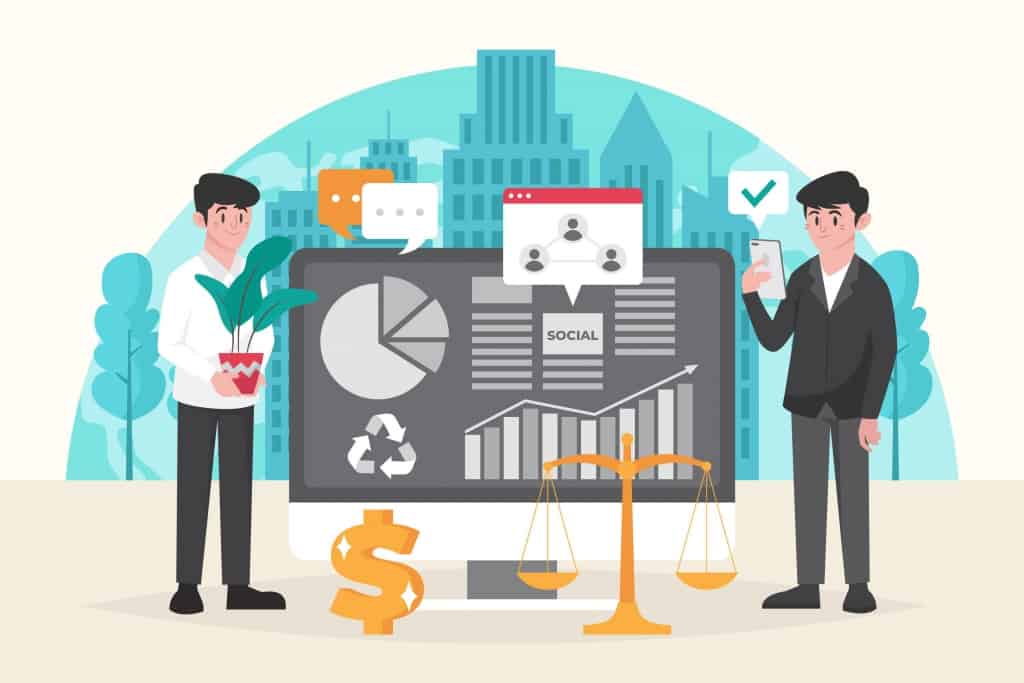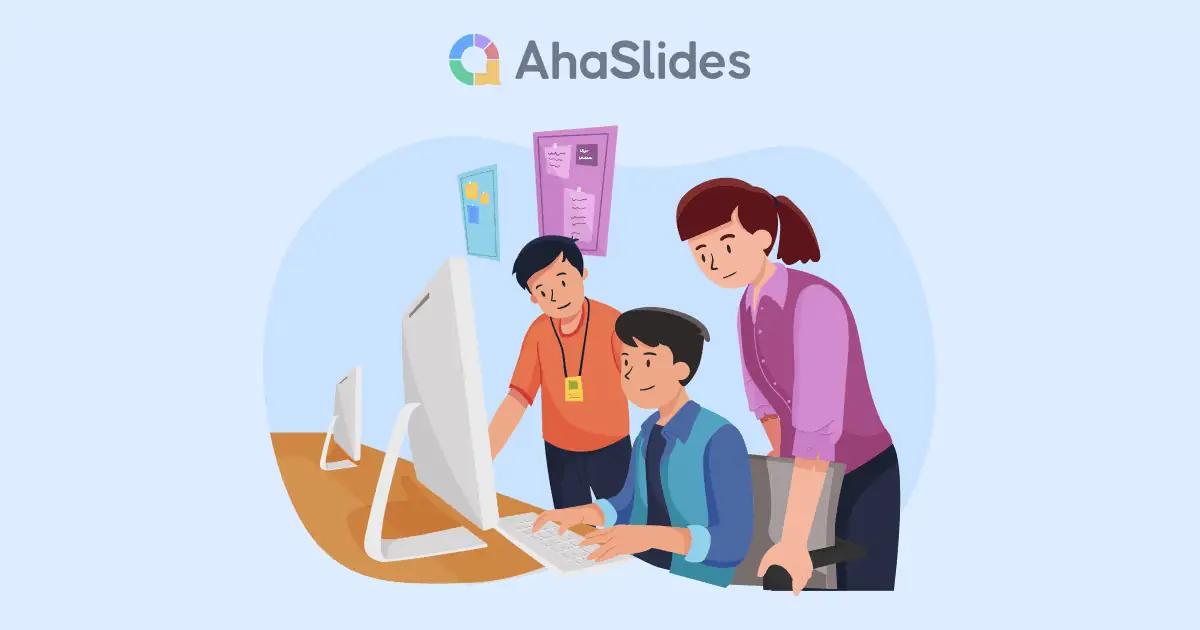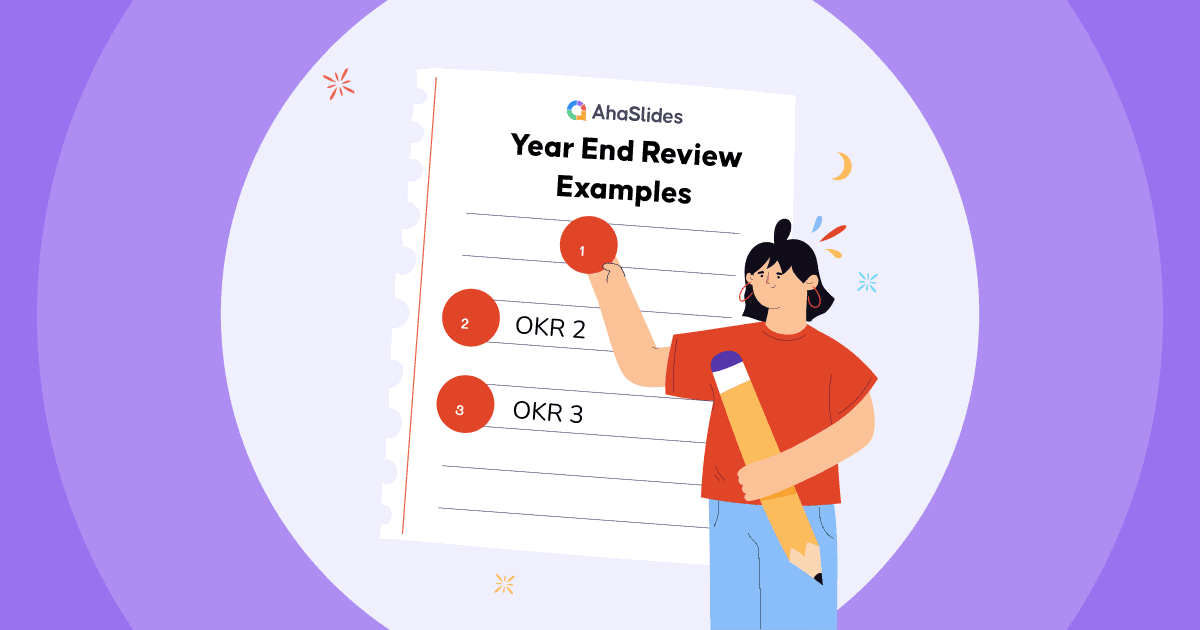Har du någonsin hamnat i en situation där du var tvungen att pruta om priset på en bil, förhandla om en löneökning eller till och med pruta med en gatuförsäljare om en souvenir? I så fall har du ägnat dig åt fördelningsförhandlingar, en grundläggande förhandlingsstrategi som fokuserar på att dela en fast resurs.
I det här blogginlägget ska vi utforska vad distributiv förhandling är, dess vardagliga exempel och hur det skiljer sig från integrativ förhandling. Vi kommer också att fördjupa oss i de viktigaste strategierna och taktikerna som kan hjälpa dig att bli en mer effektiv förhandlare i distributiva scenarier.
Innehållsförteckning
- Vad är distributionsförhandlingar?
- Distributiva förhandlingar vs. integrerande förhandlingar
- Exempel på distributionsförhandlingar
- Strategi och taktik för distributionsförhandlingar
- Key Takeaways
- Vanliga frågor

Tips för bättre engagemang

Letar du efter mer kul under sammankomster?
Samla dina teammedlemmar genom ett roligt frågesport på AhaSlides. Registrera dig för att ta gratis frågesport från AhaSlides mallbibliotek!
🚀 Ta gratis frågesport☁️
Vad är distributionsförhandlingar?
Distributiva förhandlingar är en förhandlingsstrategi där två eller flera parter strävar efter att fördela en fast eller begränsad resurs mellan sig. Se det som ett scenario där du måste dela en pizza i skivor, och alla vill ha en större bit. I distributionsförhandlingar är tanken att maximera din del av kakan samtidigt som du försöker få bästa möjliga affär för dig själv.
Enkelt uttryckt är det som en dragkamp om vem som får vad. Den här typen av förhandlingar involverar ofta konkurrerande intressen, där det den ena parten vinner kan den andra förlora. Det är en vinn-förlora-situation, där ju mer den ena sidan vinner, desto mindre blir det för den andra.
Distributiva förhandlingar vs. integrerande förhandlingar
Fördelningsförhandlingar handlar om att göra anspråk på din del, som att pruta om ett pris på en marknad eller förhandla om en löneökning med din arbetsgivare. Ju mer du får, desto mindre får den andra parten.
Integrativa förhandlingar, å andra sidan är det mer som att expandera marknaden. Föreställ dig att du och din vän har en pizza, men du har också några extra pålägg som pepperoni, svamp och ost. Istället för att slåss om den befintliga pizzan arbetar ni tillsammans för att skapa en bättre genom att lägga till pålägg efter eget tycke. Integrativa förhandlingar är en win-win-strategi där båda parter samarbetar för att hitta kreativa lösningar som ökar det totala värdet.
Så, i ett nötskal, handlar distributionsförhandlingar om att dela en fast kaka, medan integrerade förhandlingar handlar om att göra kakan större genom att hitta ömsesidigt fördelaktiga lösningar.

Exempel på distributionsförhandlingar
För att bättre förstå distributiva förhandlingar, låt oss utforska några verkliga exempel där denna förhandlingsstrategi kommer in i bilden:
#1 – Löneförhandling
Tänk dig att du diskuterar din lön med en potentiell arbetsgivare under en jobbintervju. Du vill ha en högre lön, och de vill kontrollera arbetskraftskostnaderna. Denna situation representerar distributiva förhandlingar, där ni båda konkurrerar om en fast resurs – företagets budget för din tjänst. Om ni förhandlar framgångsrikt får du en högre lön, men det kan ske på bekostnad av andra förmåner eller förmåner.
#2 – Bilköp
När du besöker en bilhandlare är det troligt att du förhandlar om distributiva alternativ. Du vill ha lägsta möjliga pris, medan säljaren vill maximera sin vinst. Förhandlingarna kretsar kring bilens pris, och att hitta en medelväg som tillfredsställer båda parter kan vara utmanande.
#3 – Skilsmässouppgörelser
När ett par går igenom en skilsmässa kan uppdelningen av tillgångar vara ett klassiskt exempel på avtalsförhandlingar. Båda parter har ett intresse av att få ut så mycket som möjligt av de gemensamma tillgångarna, såsom fastigheter, sparande och investeringar. Förhandlingen syftar till att fördela dessa resurser rättvist, med hänsyn till den rättsliga ramen och varje makes intressen.
I vart och ett av dessa exempel involverar distributionsförhandlingar parter som strävar efter att maximera sin andel av en begränsad eller begränsad resurs.
Strategi och taktik för distributionsförhandlingar

Vid distributiva förhandlingar, där resurserna är begränsade och konkurrensutsatta, kan en väl genomtänkt strategi och effektiv taktik göra hela skillnaden för att uppnå önskat resultat. Låt oss fördjupa oss i de viktigaste strategierna och taktikerna som används i denna typ av förhandling:
#1 – Förankra din position
Det första budet fungerar ofta som ett ankare och påverkar förhandlingens riktning. Om du är säljaren, börja med ett högt pris. Om du är köparen, börja med ett lågt bud. Detta sätter tonen och ger utrymme för eftergifter.
#2 – Ange din bokningspunkt
Håll din reservationspunkt – det lägsta eller högsta acceptabla budet du är villig att acceptera – för dig själv. Att avslöja det för tidigt kan ge motparten en fördel genom att känna till dina begränsningar.
#3 – Gör strategiska eftergifter
När du gör eftergifter, gör det selektivt och strategiskt. Undvik att ge bort för mycket för snabbt. Gradvisa eftergifter kan signalera flexibilitet samtidigt som du bevarar din position.
#4 – Använd ryckningen
När du får ett erbjudande, anställ rycktaktiken. Reagera med förvåning eller oro för att få den andra parten att ifrågasätta rimligheten i deras erbjudande. Detta kan få dem att förbättra sitt förslag.
#5 – Information är makt
Undersök ämnet och motpartens ståndpunkt noggrant. Kunskap är ett värdefullt vapen i distributiva förhandlingar. Ju mer information du har, desto bättre rustad är du att förhandla effektivt.
#6 – Skapa deadlines
Tidspress kan vara en värdefull taktik. Om du till exempel förhandlar om ett kontrakt kan det att sätta en deadline för avtalets ingående få den andra parten att fatta snabbare beslut, potentiellt till din fördel.

#7 – Använd begränsad auktoritet
Påstå att du har begränsad befogenhet att fatta beslut. Detta kan vara en kraftfull taktik, eftersom det skapar intrycket av att du inte är den slutgiltiga beslutsfattaren. Det kan uppmuntra den andra parten att erbjuda mer för att få godkännande från någon med högre befogenhet.
#8 – Bra polis, dålig polis
Om ni förhandlar som ett team, överväg tillvägagångssättet där den goda polisen och den onda polisen är bra. En förhandlare intar en hård hållning, medan den andra verkar mer försonlig. Detta kan skapa förvirring och uppmuntra till eftergifter.
#9 – Gå därifrån när det behövs
Var beredd att lämna förhandlingen om det är tydligt att motparten inte är villig att uppfylla dina minimikrav. Ibland är det den kraftfullaste taktiken att lämna förhandlingsbordet.
Key Takeaways
Distributionsförhandling är en värdefull färdighet att ha i din arsenal. Oavsett om du prutar på en loppmarknad, förhandlar om en löneökning eller avslutar en affärsuppgörelse, kan förståelse för strategierna och taktikerna bakom distributionsförhandling hjälpa dig att säkra bästa möjliga resultat för dig själv eller din organisation.
Och glöm inte att oavsett om du vässar dina förhandlingsfärdigheter, håller slagkraftiga presentationer eller utbildar säljteam för att lyckas, överväg potentialen i AhaSlides för att stödja din resa mot framgång. Ta ditt innehåll till nästa nivå med vår interaktiva mallar som tillgodoser olika behov och branscher. Din publik kommer att tacka dig.
Vanliga frågor
Vad är fördelande kontra integrerande förhandlingar?
Fördelningsförhandlingar: Det här är som att dela en paj. Parterna konkurrerar om en fast resurs, och det den ena sidan vinner kan den andra förlora. Det ses ofta som en vinst-förlust-situation.
Integrativa förhandlingar: Tänk på detta som att utöka kakan. Parterna samarbetar för att hitta kreativa lösningar som ökar det totala värdet av de resurser som förhandlas fram. Det är vanligtvis en win-win-situation.
Är distributionsförhandlingar en win-win?
Distributionsförhandlingar är i allmänhet inte en win-win-situation. De leder ofta till ett win-lose-scenario där den ena sidans vinst är den andra sidans förlust.
Ref: De ekonomiska tiderna | American Express








